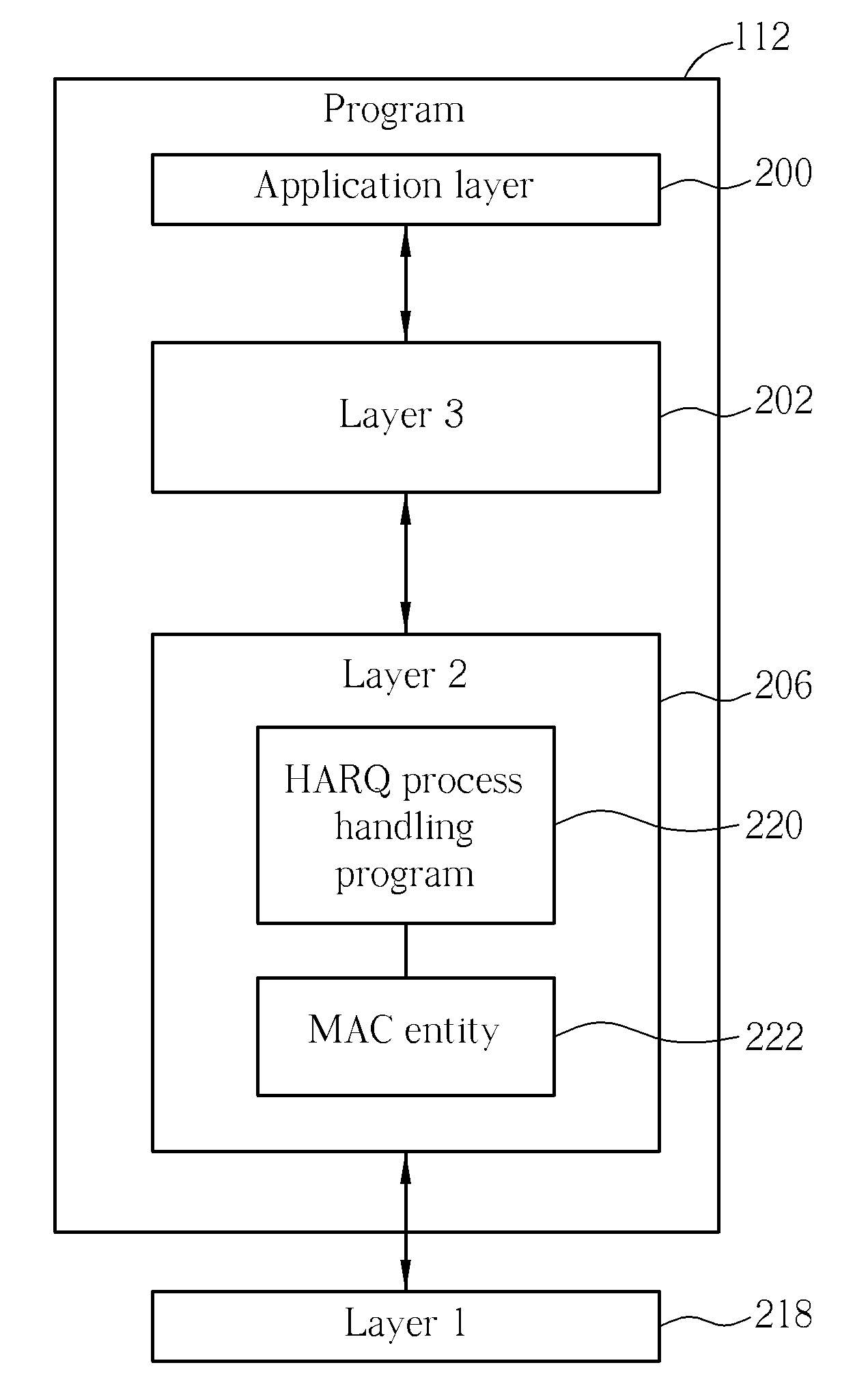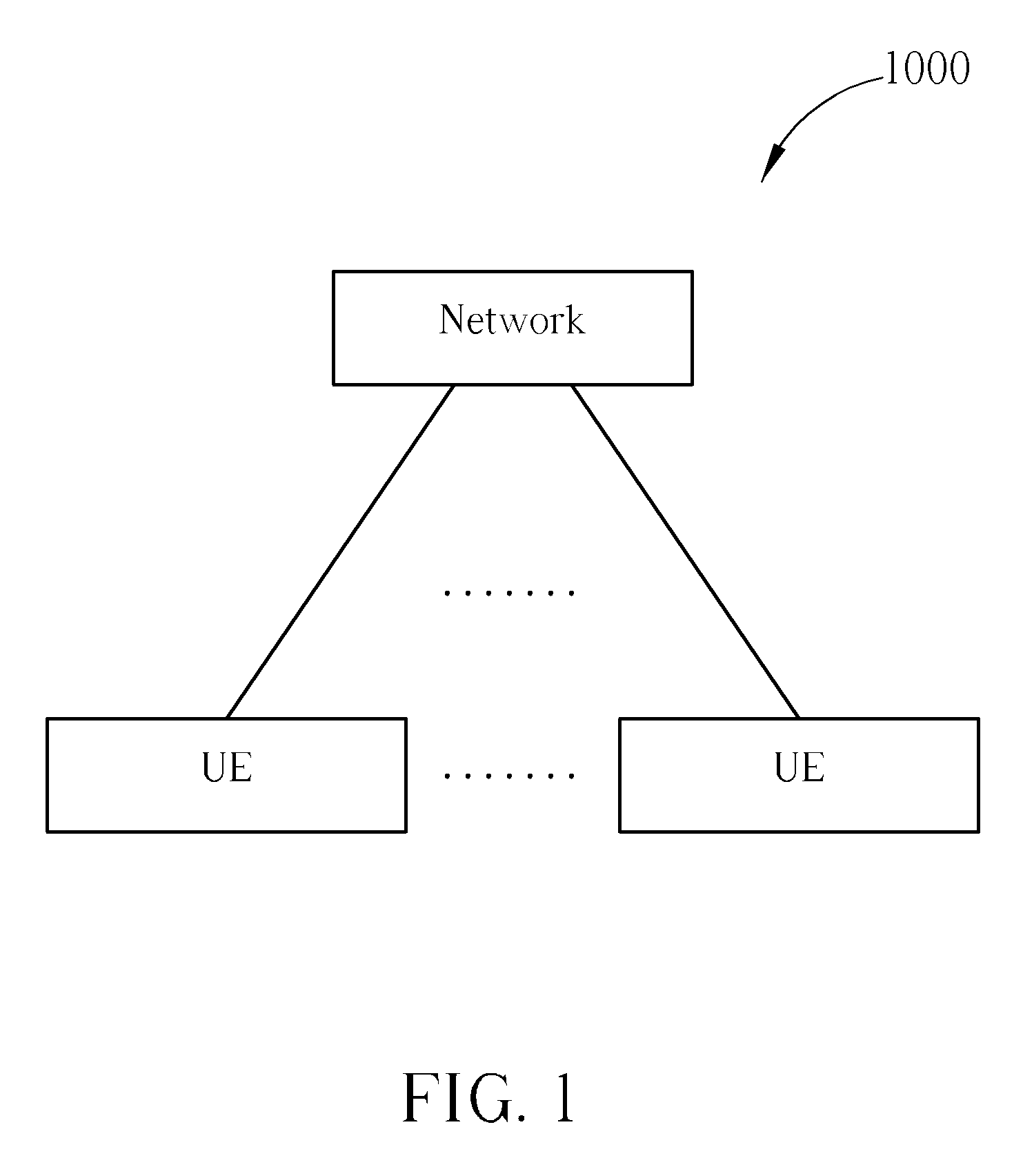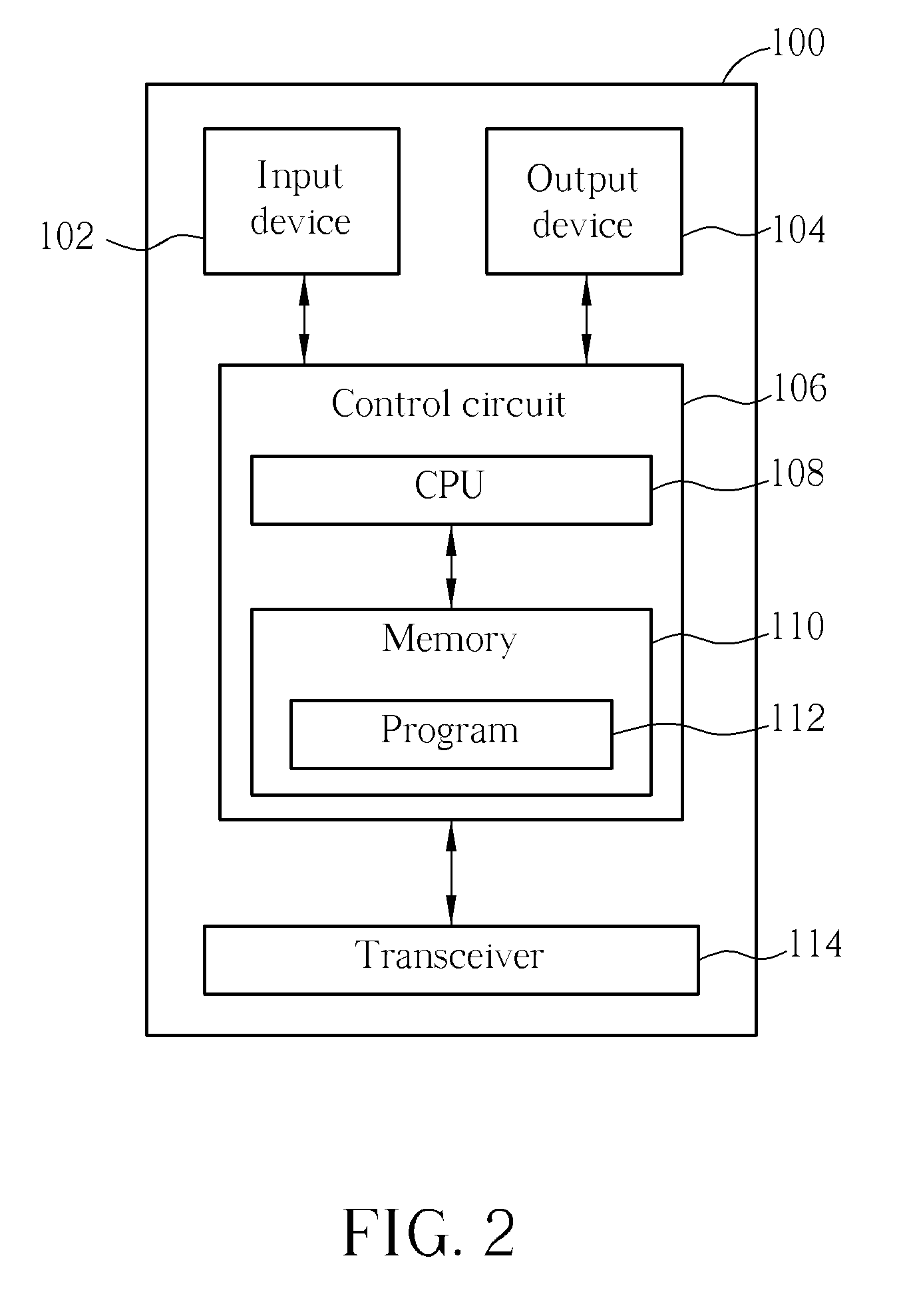Method and Apparatus for Handling HARQ Process of Semi-Persistent Scheduling
a technology of semi-persistent scheduling and harq, applied in the field of methods, can solve the problems of different use of ndi in sps and in ds
- Summary
- Abstract
- Description
- Claims
- Application Information
AI Technical Summary
Benefits of technology
Problems solved by technology
Method used
Image
Examples
Embodiment Construction
[0032]Please refer to FIG. 1, which illustrates a schematic diagram of a wireless communications system 1000. The wireless communications system 1000 is preferred to be a Long Term Evolution (LTE) system, and is briefly composed of a network and a plurality of user equipments (UEs). In FIG. 1, the network and the UEs are simply utilized for illustrating the structure of the wireless communications system 1000. Practically, the network may comprise a plurality of base stations (Node Bs), radio network controllers and so on according to actual demands, and the UEs can be devices such as mobile phones, computer systems, etc.
[0033]Please refer to FIG. 2, which is a functional block diagram of a communications device 100 in a wireless communications system. The communications device 100 can be utilized for realizing the UEs in FIG. 1, and the wireless communications system is preferably the LTE system. For the sake of brevity, FIG. 2 only shows an input device 102, an output device 104, ...
PUM
 Login to View More
Login to View More Abstract
Description
Claims
Application Information
 Login to View More
Login to View More - R&D
- Intellectual Property
- Life Sciences
- Materials
- Tech Scout
- Unparalleled Data Quality
- Higher Quality Content
- 60% Fewer Hallucinations
Browse by: Latest US Patents, China's latest patents, Technical Efficacy Thesaurus, Application Domain, Technology Topic, Popular Technical Reports.
© 2025 PatSnap. All rights reserved.Legal|Privacy policy|Modern Slavery Act Transparency Statement|Sitemap|About US| Contact US: help@patsnap.com



